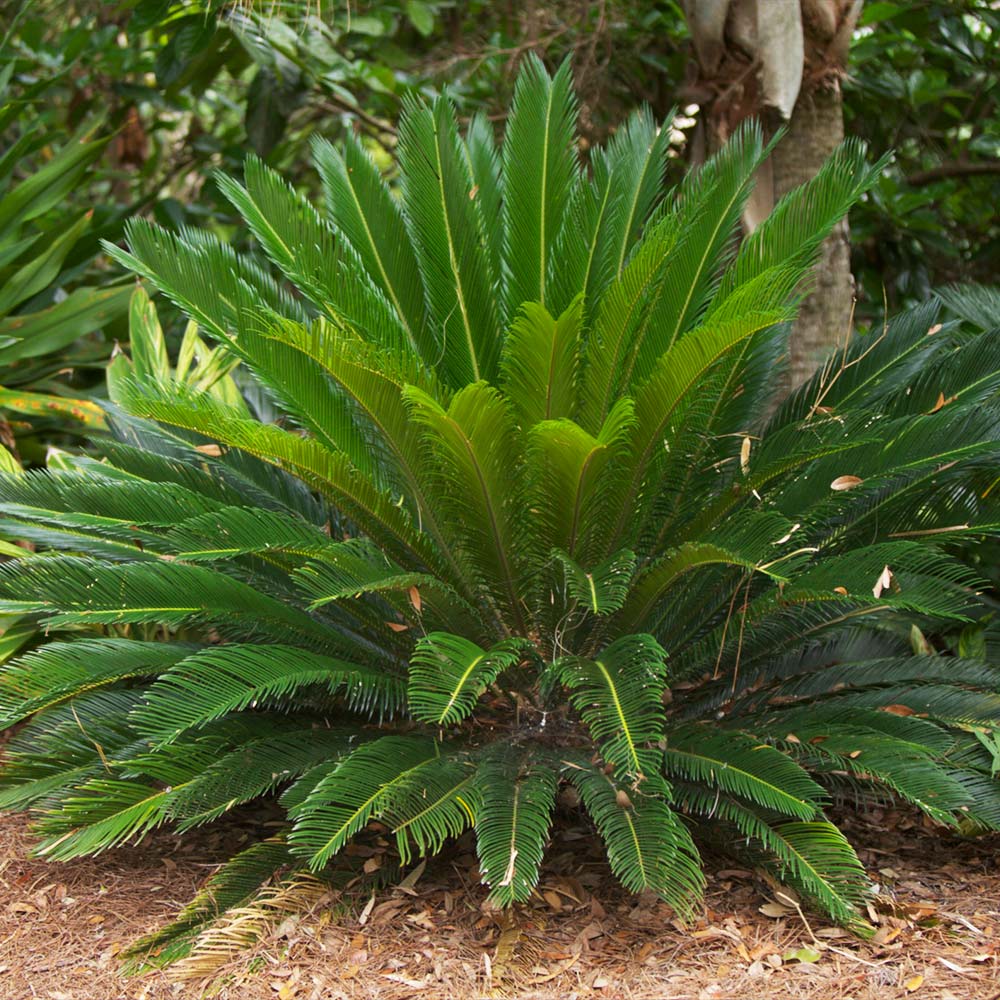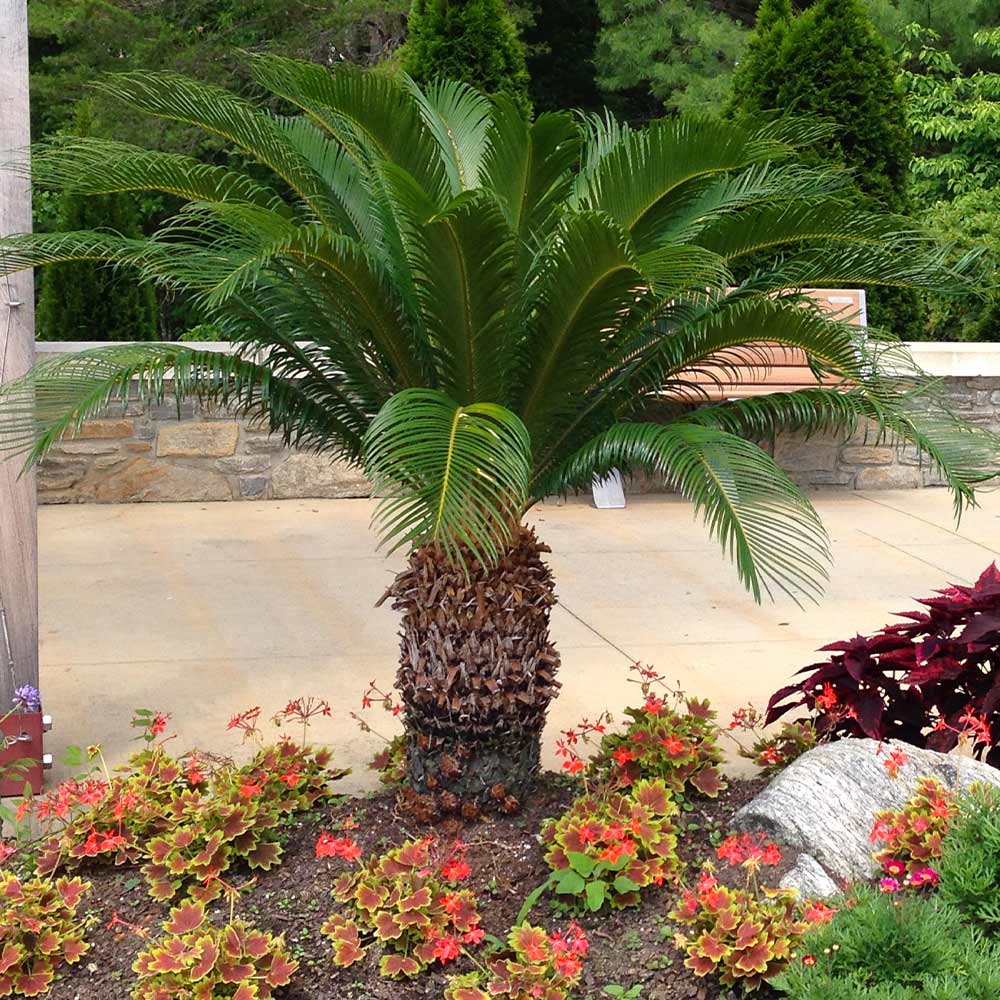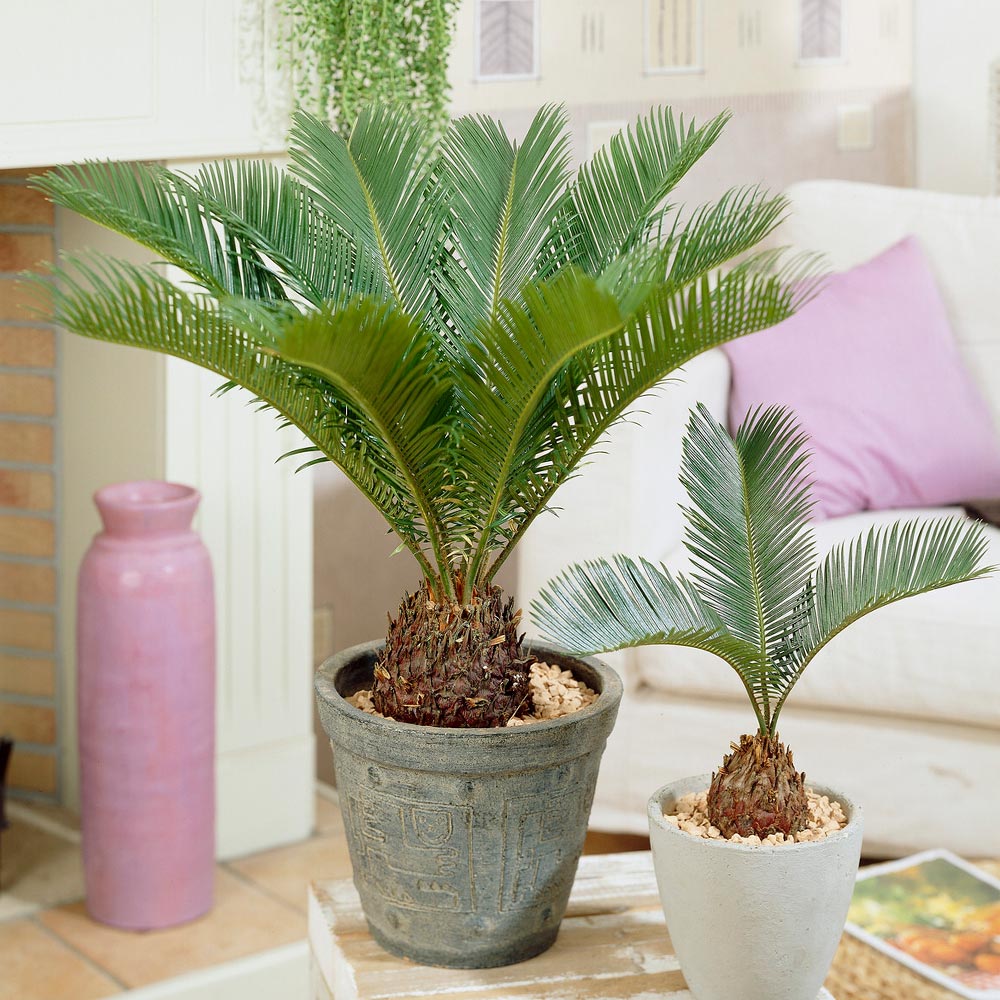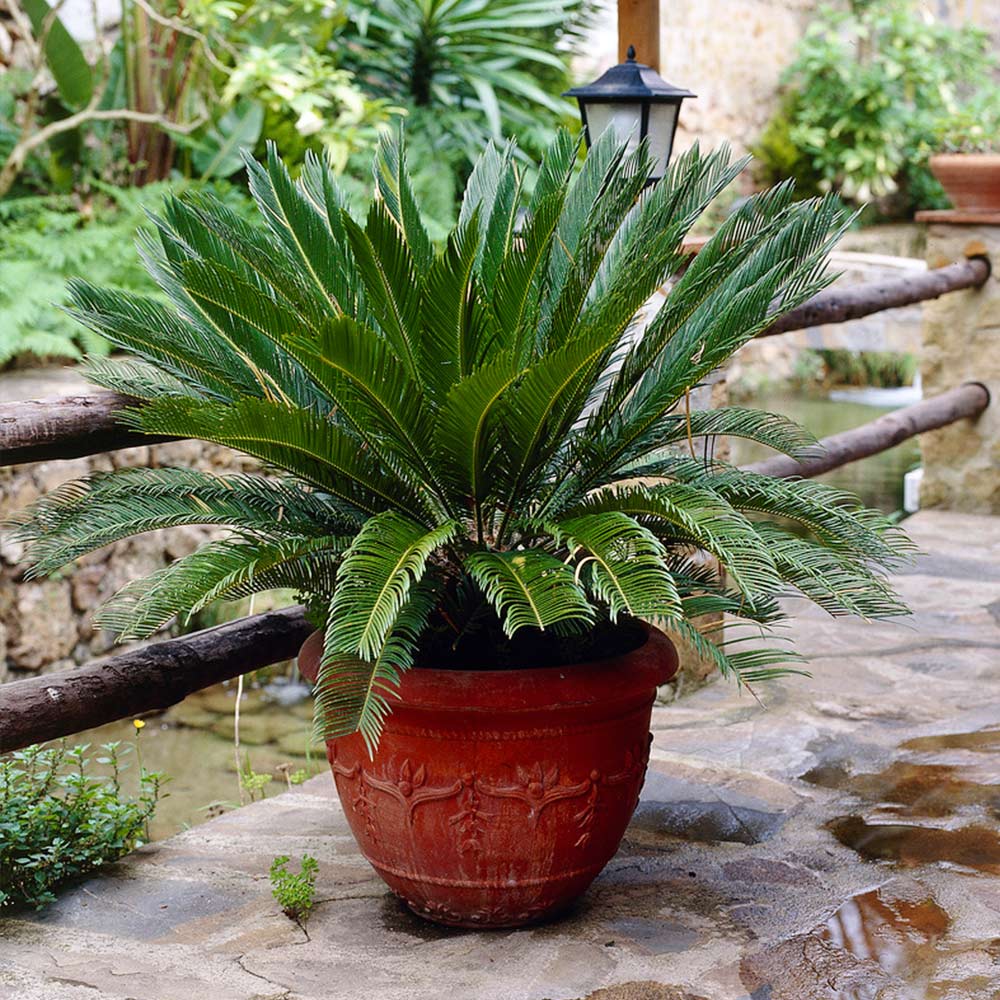Year-Round, Low-Maintenance Palm
Vibrant, feather-like foliage atop a textured brown trunk defines the Sago Palm Tree. This luxe cultivar's fronds are thick and shiny green with the typical cascading effect of other palms. Plus, it's actually considered a 'living fossil' since the species has changed very little over the last two million years. And it appears so flawless, that it is often mistaken as an artificial plant.
Even better? It's a great plant for beginners. Left unattended the specimen will continue to grow no matter what, so Sagos are essentially a mistake-proof palm. Water requirements are similar to that of a cactus, and the soil is allowed to dry between waterings.
It thrives in bright light but will adjust to moderate light levels. Cold hardy means it's also a great choice for an array of climates. Low-maintenance and luxe? Check.
Best of all, it can thrive indoors or out. The Sago Palm has a marvelous presence that provides instant tropical appeal. With its low-maintenance habit and stunning appearance, the Sago is a perfect addition, whether you pot it and bring it indoors during the winter or keep it in your landscape in warmer year-round zones.
Either way, the Sago Palm provides an elegant and breezy island look that can be easily grown in any space. This tough but elegant plant brings a tropical feel with no fuss. See what the hype's all about - order a few Sagos of your own!
Looking for more palm trees to add to your collection? Check out our guide to popular .
Planting & Care
1. Planting: You don't have to immediately repot your plant - you'll only need to repot approximately every other year, once your Sago outgrows its shipped container or original pot. Increase the pot size by 2 inches each time you repot to accommodate new growth. Sago Palms are poisonous if consumed, so place your sago in a spot safe from curious kids and pets.
If growing outdoors make sure you plant in well-draining soil and provide adequate space to grow.
2. Watering: Mist your sago weekly if kept indoors in addition to regular watering – this ensures that its native humid climate is simulated in your home. If you're not sure when to water, simply check the soil about 2 inches down. If the soil is dry here, it's time to water.
FGT Tip: If fronds begin to yellow, it could be a sign of overwatering. If you see yellowed fronds, allow time for the soil to dry before watering your plant again. Browning fronds, however, mean that your Palm is not getting enough water and needs more. Using a well-draining potting mix is key in getting this balance.
3. Pruning: Simply any fronds as they turn yellow or brown. This improves the look of your plant and creates clean space for healthier green fronds to grow.
4. Fertilizing: You can apply palm fertilizers that contain specific nutrients best suited for palms. If you prefer, you can also use a balanced fertilizer, such as an 8-8-8 formula, for quicker growth in spring and summer.









Comment